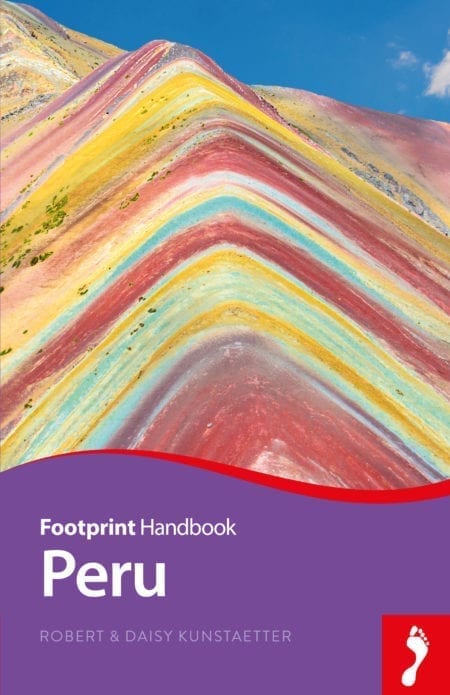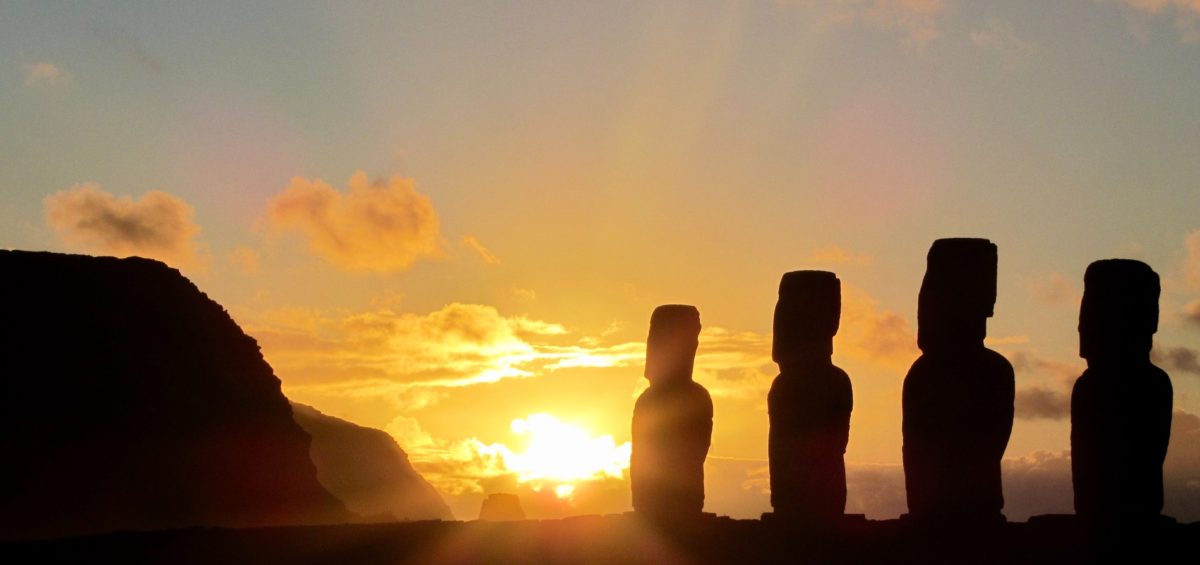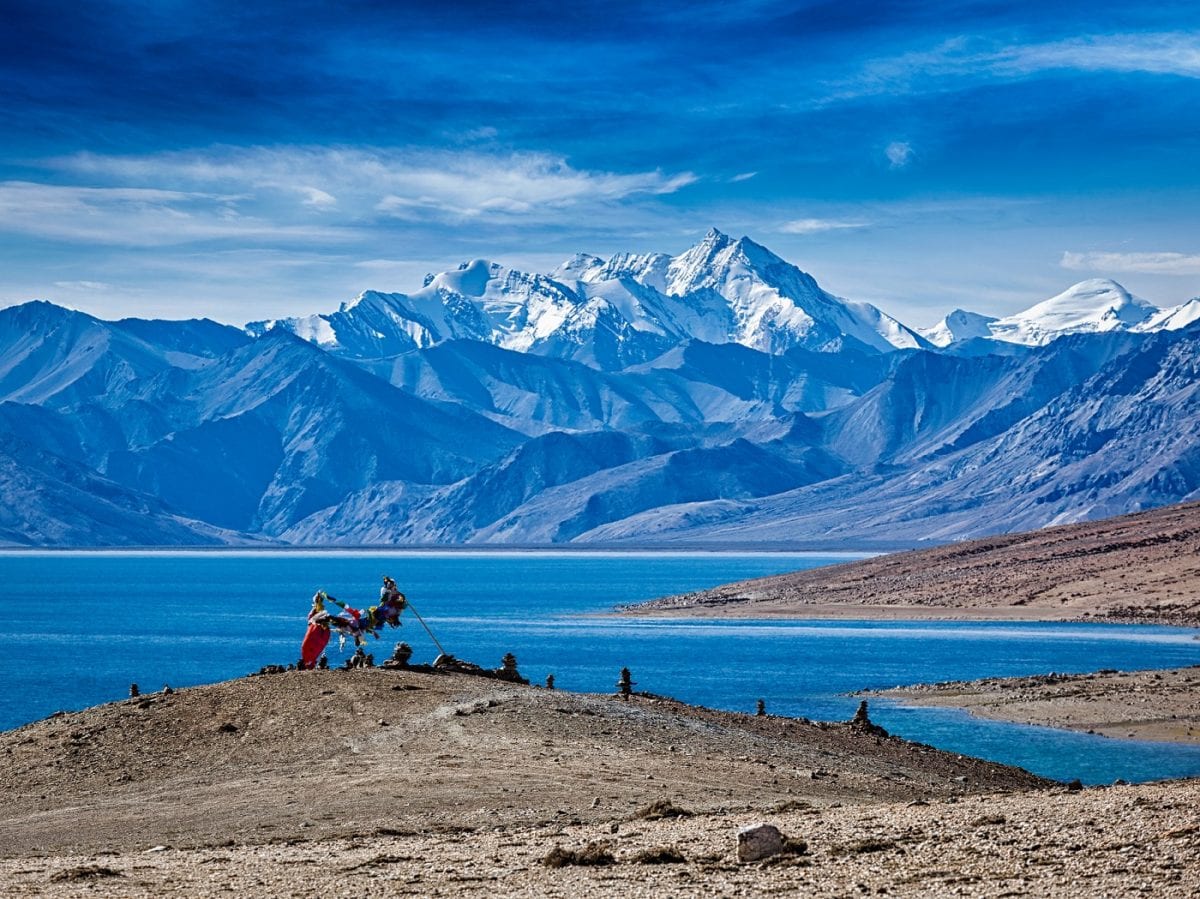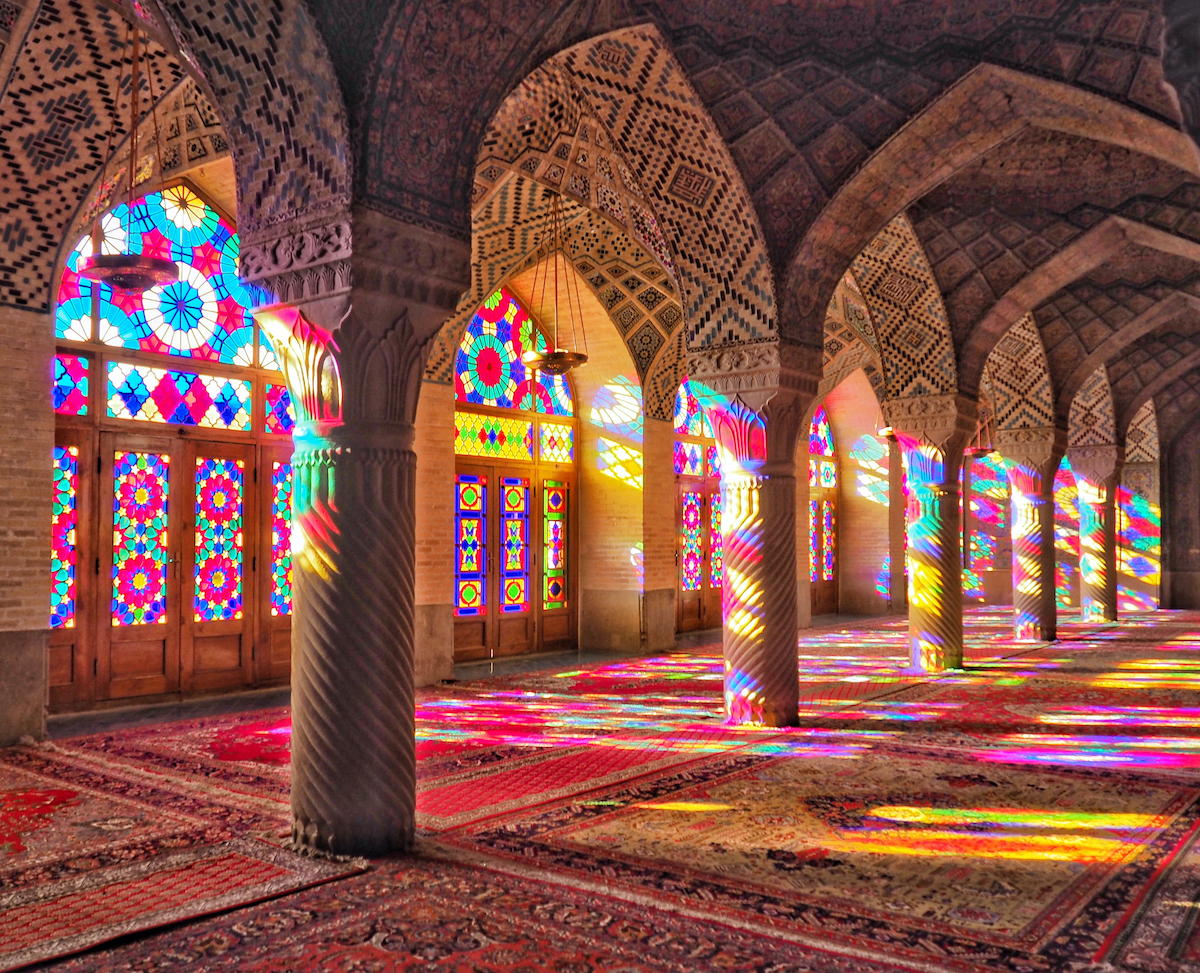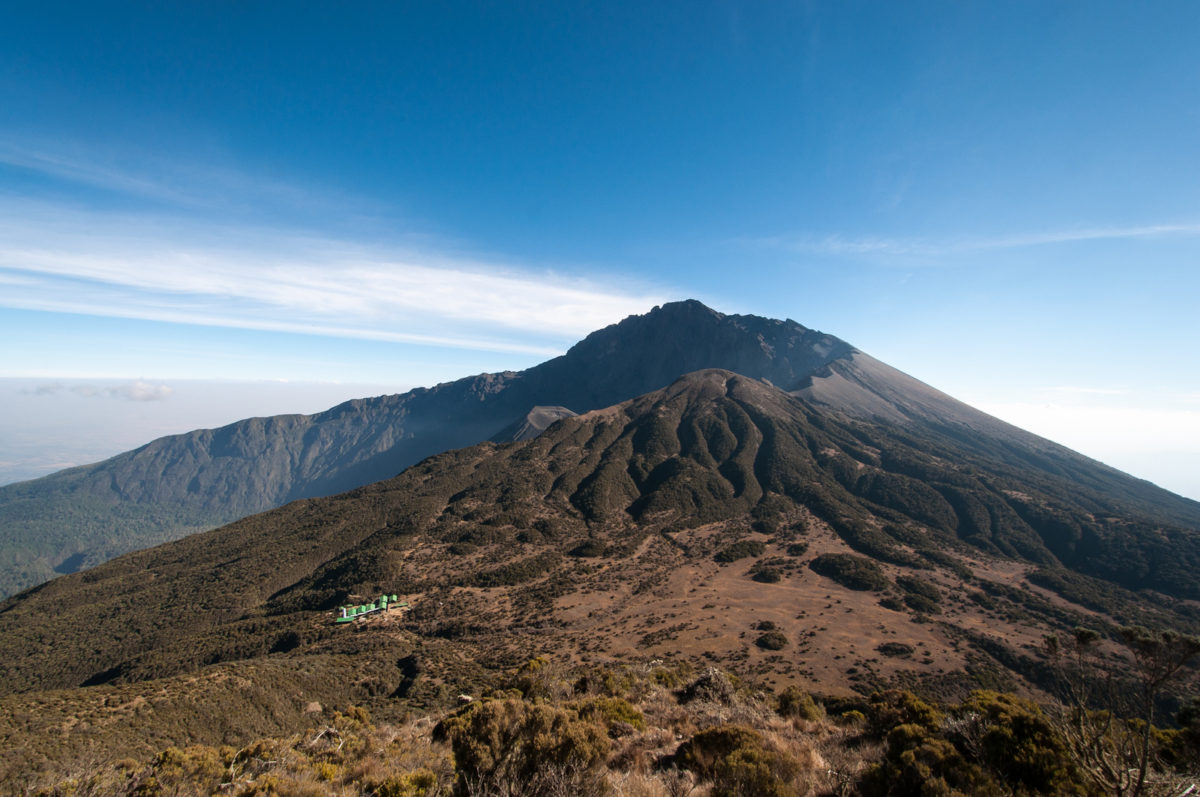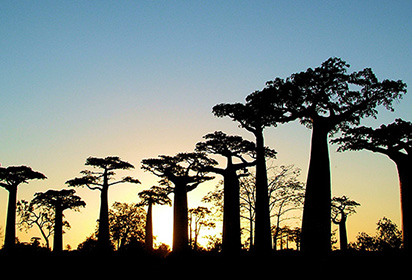With its attitude and diversity, from snow-capped summits to sun-drenched beaches, peaceful ruins and riotous festivals, traditional villages and cutting-edge contemporary cities, Peru is one of the world’s most multidimensional destinations, meaning that it will never cease to awe, inspire and fascinate the visitor.
Hilary Bradt & Alexander Stewart
At the heart of the ancient Inca empire, and in the shadow of the mighty Andes, Peru boast some of the world’s most iconic landmarks, striking scenery, rewarding longdistance treks and extraordinary wildlife. Travel highlights include Lima, the oldest city in the Americas, Machu Picchu, Lake Titicaca and the Amazon.
Whether you are watching Andean condors gliding on thermals, trying to unravel the mystery of the Nazca Lines, or encountering an elusive puma, Peru is a destination that cannot fail to stimulate and inspire the adventurous traveller.
Peru is a place of enormous antiquity and, whatever your sphere of interest, there is an extraordinary history to discover in the course of any visit here. Myths and legends abound, whilst the Incas, the best-known ancient civilisation, are in fact just one of many pre-Columbian groups to leave their mark on the country. Indeed, Peru is almost unequalled in terms of its archaeological wealth and ranks alongside the great archaeological centres of Mexico and Egypt.
The arrival of the Spanish conquistadors in search of treasure heralded an extraordinary clash of cultures, the demise of the Inca Empire, and a period of colonial rule. More recently, the country has endured political turmoil and outbreaks of terrorism but has emerged from these troubled times to re-establishitself and rise to become one of the economic success stories of South America. What’s more, Peruvians are justifiably proud of their heritage, maintain their traditions and hark back to their glorious past.
For more information, check out our guide to Peru:
Food and drink in Peru
Eating out
Peru is enjoying some extensive exposure on the back of a culinary revolution in the country that has seen its blend of fusion cooking exported across the world; the country’s cured-fish ceviches, spicy mashed potato causas and tender alpaca steaks – though possibly not its roasted guinea pig – are going global.
Charismatic celebrity chefs such as Gaston Acurio and Virgilio Martinez have brought regional specialities to the attention of a far wider audience and international diners have responded incredibly favourably, with gastronomes around the globe singing the praises of Peruvian food and Peruvian restaurants springing up across the Americas, Spain and in London.
Lima stands at the centre of this gastronomic renaissance, but there are fine food outposts all over the country and a number of food festivals, such as La Mistura, that are gaining a similar following. As you move around the country you’ll discover a wide variety of ingredients and foodstuffs being used in the different regions and notice that each has its own speciality.
On the coast, the enormous amount of fish found offshore means that you’ll enjoy a wealth of seafood. Ceviche, white fish marinated in citrus juice, is the standout dish, although chupe de camarones, a shrimp chowder, is also delicious. Fish include sea bass (corvina), salmon and snapper.
They tend to be served cooked in garlic (al ajo), fried (frito) or baked in white wine, tomatoes and onion (a la chorrillana). You’ll also come across lots of shellfish, including mussels and scallops. Octopus (polpo) is another favourite. Along with fresh seafood, the northern coast also specialises in a heady goat stew cooked with cilantro (seco de cabrito) and served with beans or rice.
In the highlands, food is heartier and often based around corn or potato; there are hundreds of types of tuber grown here. Soups and broths are widespread, with a lightly spiced beef broth containing noodles (sopa a la criolla) and chicken soup (caldo de gallina) especially widespread.
Stir fry beef with onions, chilli, tomatoes and potato (lomo saltado) is ubiquitous, while roasted guinea pig (cuy) is considered a delicacy – it tastes a little gamey. You’ll also come across trout (trucha) fished from Lake Titicaca. In the jungle, fresh fruit is readily available; meals are often accompanied by fried banana and palm hearts.
You’ll also be served river fish or shrimp, along with tamales made of mashed yucca and stuffed with seasoned chicken (juanes). By eating in lodges you should ensure you’re not served endangered turtle soup or monkey meat.
Desserts everywhere are sweet concoctions, including flan and caramel topped with meringue (suspiro a la limeña). Look out too for a purple corn pudding served with pineapple and dried fruits (mazamorra morada). Local fruits include custard apple (cherimoya), guava, mango, passion-fruit and soursop (guanábana); try them as juices, smoothies or ice cream.
Drinks
Most hotels and lodges provide bottled water – don’t be tempted to drink unpurified or unfiltered water. Drinks range from the lurid Inca Kola to soothing herbal teas such as camomile (manzanilla) or coca (maté de coca).
The latter won’t make you high but will ease altitude sickness and soothe stomach complaints. The quality of coffee is improving; usually you will be served a small jug of coffee essence which you add to a mug of hot water. Milk is also served separately. The national drink is pisco, a type of grape brandy used to make heady cocktails, that is best bought in Ica.
The Ica Valley is also where some of Peru’s best wines are produced, although they’re not really a patch on neighbouring Chile’s. Beers though are good and include the delicious and drinkable Cusquena and Arequipena. Whilst in Lima you’ll come across Cristal and Pilsner, and Trujillo produces a type of ale, Trujillo Malta. In the Andes you may also be offered strong homemade corn beer (chicha). On the coast a non-alcoholic corn drink, the purple-coloured chicha morada is also readily available.
Health and safety in Peru
Health
In general, you should stay safe and healthy on a trip to Peru. You won’t need an extensive medical kit full of drugs and bandages as a typical tour is very safe. Your tour operator ought to provide guidelines and information on what you will need though, to balance sensible caution with realistic risk.
Immunisations
There are no requirements for vaccination regardless of where you are coming from. It is wise, however, to be up-to-date with tetanus, polio, diphtheria, typhoid and hepatitis A.
Yellow fever vaccination is likely to be recommended if you are travelling to areas east of the Andes, and occasionally for longer-term travellers to the west coast. This vaccine is not suitable for everyone and needs to be discussed with a travel health expert. You may also choose to consider immunisation against hepatitis B, rabies, cholera and tuberculosis.
Malaria
Malaria is a mosquito-borne disease that can be found in parts of Peru. Consider taking antimalarial tablets unless your trip is restricted to Lima, the coastal region south of the capital or the highlands including Arequipa, Cusco and surrounds, and Lake Titicaca. In general, it is better to be safe than sorry as the disease is particularly unpleasant and can even be fatal.
There is no vaccine, but several types of oral prophylactics are available. Malarone (proguanil and atovaquone) is recommended for short trips as, although it’s expensive, it is effective and has fewer side effects. Chloroquine may be recommended for trips to the jungle around Puerto Maldonado and this is a weekly tablet, which is easy to take and very cheap. Jungle areas around Iquitos require different medication, including Malarone, doxycycline or Mefloquine (lariam). None of the drugs is 100% effective. Visit a travel clinic for upto- date advice about the most suitable option.
Travel clinics and health information
A full list of current travel clinic websites worldwide is available on www.istm.org. For other journey preparation information, consult www.travelhealthpro.org.uk (UK) or http://wwwnc.cdc.gov/travel/ (US). Information about various medications may be found on www.netdoctor.co.uk/travel. All advice found online should be used in conjunction with expert advice received prior to or during travel.
Safety
Crime
Most people affected by crime are victims of opportunistic theft. In general though, Peru is very safe. If you are in a tour group the chances of serious crime are small. Watch out for bag snatchers and pickpockets in large crowds, close to money changing facilities, tourist hotspots or at markets and train stations. If you are accustomed to the security of a larger group, be extra vigilant when out walking on your own or in smaller numbers.
To make yourself less of a target, leave expensive items at home, leave valuables in a hotel safe, use a money belt or keep your wallet in an inside pocket, don’t get large amounts of cash out in public places, carry cameras and other equipment in a day pack or by their straps, and appear vigilant. Watch out for unusual activity designed to distract you and alert others if you see something suspicious.
Keep copies of important documents such as your passport, and note down serial numbers for cameras and the like; you may want to email them to yourself. If you are the victim of theft or a scam, report it to the police or local authorities immediately. The police will provide you with a report and incident number, which is vital for an insurance claim.
Drugs
Peru abides by all the usual drug laws so don’t dabble. If someone does offer you drugs, be aware that they may be an undercover policeman and you may be being set up in order to extract a bribe.
Sentences for possession and trafficking are high and prison conditions are not pleasant. However, coca leaf is grown and used legally for medicinal and cultural purposes; you may find that you can’t bring it back to your home country though.
Female travellers
Women travelling alone in Peru ought to have fewer gender-related issues compared with visiting some parts of the world. On an organised tour, guides and facilities staff should be highly professional.
That said, machismo is alive and well in Latin America and you may encounter staring, flirtation and wolf-whistles in public places. If you are fairskinned or have blonde hair, then be prepared for this to escalate. In general this behaviour is not meant to be insulting and shouldn’t be that bothersome; either ignoring the provocation or issuing a firm ‘no’ should diffuse the situation.
At the risk of stating the obvious, single women travellers might want to be especially circumspect when choosing what to wear; in the highlands and traditional communities clothing is quite conservative. Skimpy clothing might not only offend but, however unfair this seems, be perceived as provocative or an advertisement of availability.
Generally speaking, if you use common sense, don’t walk alone at night in unfamiliar places, don’t take unlicensed taxis, and always remain aware of your surroundings, you ought to avoid any unpleasant encounters.
Travellers with a disability
Peru isn’t especially accommodating of travellers with disabilities. There are virtually no signs in Braille or telephones for the hard of hearing, for instance. Public places and streets rarely accommodate mobility- or sight-impaired people and you will need the assistance of a companion more than you might in a Western city. There are, however, upmarket hotels in most major centres that will have disability-adapted features. What’s more, increasingly large numbers of tour operators are conscious of meeting the needs of less-mobile or otherwise less-able travellers. When planning your trip make sure to enquire of your tour operator which facilities accommodate disabled travellers.
Travel and visas in Peru
Visas
All visitors to Peru require a passport valid for at least six months after the end of their stay. Most nationalities, including those in the European Union, North and South America, South Africa, Australia and New Zealand, do not require a visa to enter the country though; visitors are allowed a 30- to 90-day stay.
This is stamped into your passport and onto a tourist card – an Andean Immigration Card or Tarjeta Andina de Migracion, which must be returned when you leave the country.
Ask for the maximum allocation upon arrival. If you lose this card you will be forced to queue up at the immigration office for a replacement. If you do require a visa, you will need a valid passport, a departure ticket from Peru, two colour passport photos, an application form and proof that you have sufficient funds to support yourself during your stay.
Thirty-day extensions can be obtained at immigration offices in major cities such as Arequipa, Cusco, Lima, Puerto Maldonado, Puno and Trujillo. Technically you can extend your stay three times, up to a maximum of 180 days in total.
After this you must leave the country but can cross back over the border immediately, at which point you will receive a new 90-day stay and the process begins again.
Getting there and away
Lima is the focus point for arrivals. The main airport, Aeropuerto Internacional Jorge Chávez, is a major transport hub and has a mass of modern facilities. Direct flights from Europe originate in Amsterdam and Madrid. From other European cities, including London, connections must be made in one of these, or in gateways including Atlanta, Dallas, Houston, Miami, Los Angeles and New York in the US. Airlines with routes to and from Peru include KLM (www.klm.com), Iberia (www.iberia.com.pe) and LAN (www.lan.com).
From the US, American (www.aa.com), Continental (www.continental.com) and Delta (www.delta.com) also fly routes to Lima. Air Canada (www.aircanada.com) flies to Lima from Toronto. Once in Lima there is an extensive network of domestic flights to a number of cities within Peru operated by airlines including LAN, StarPeru and Toca. Most popular is the flight from Lima to Cusco; if Cusco is your intended destination when flying to Peru, you are likely to land in Lima, where you’ll have to overnight, before continuing your journey the following day.
Getting around
In terms of availability, public transport is excellent in Peru. Any village served by some sort of road will have some sort of vehicle running there on some sort of irregular schedule. In terms of quality on the major routes, it’s up to you whether to go for comfort or for cheapness.
Buses
These come in various shapes and sizes, from luxury vehicles speeding along the intercity routes to ramshackle affairs serving the rural villages. You can get luxurious buses on the well-travelled routes (mostly along the coast and on paved roads into the mountains) with video, toilet and reclining seats.
Make sure you buy a ticket with a well-known company where the buses mostly leave on time, stick with the route and don’t stop at every corner. The smaller bus companies never leave on time or cancel the scheduled departure altogether if there are not enough passengers.
Try to travel during the day for more comfort, safety and scenery. Also avoid long bus rides; break your journey. You’ll enjoy the trip much more, avoid problems with theft (most of which happens when you are tired), and arrive in better shape.
The cheaper buses have more character, and more sights and smells. The amount of fruit peel, paper, babies’ pee and vomit that the average Peruvian family can dispose of during a lengthy trip in the mountain region has to be seen to be believed.
All buses stop for meals, but not necessarily at mealtimes. Make sure you understand how long you will be stopping for, or the bus will leave without you. Better still, have your meal within sight of the driver.
Plenty of snacks are available from local vendors who will pour on to the bus and crowd round the windows at every village. Remember to fill your water bottle before you leave although soft drinks are usually available from vendors.
Your luggage will be lashed to the roof or, on bus routes along the coast, be stowed away in the luggage compartment. Either way, it will be inaccessible, so bring warm clothes and something to use as a pillow during night trips (those crescent-shaped inflatable neck pillows are ideal).
You’ll also need games or a book for entertainment during unexpected delays or breakdowns. Keep your passport on you for police checks, and watch your luggage like a hawk. Padlock small items to the luggage rack or seat. Robbery is common on buses, but by professional criminals not your fellow bus passengers. Checked luggage is safe: most bus companies have an effective security system to prevent someone else claiming your luggage.
Trucks
Lorries/trucks form the backbone of public transport. Remote villages are served by trucks carrying cargo and a few passengers, but vehicles carrying only people run between the larger towns. In general, truck prices are roughly the same as cheap buses, although private colectivos or pick-up trucks will charge a bit more.
Although buses are more comfortable – and warmer – the views from an open truck are so fantastic that these should be your choice for short journeys through spectacular scenery. Although some trucks run to a schedule, most wait until they have collected enough passengers to make the trip worthwhile. Don’t be misled by the driver telling you he is leaving ahorita. His and your concept of ‘now’ will be different; you may wait for hours before he makes a move.
Remember, it is bitterly cold riding in an open truck in the Andes. Keep all your warm clothes (including gloves, cap and even your sleeping bag) handy, and carry your foam pad to cushion those bare boards. Not all trucks have a tarpaulin, so bring protection from rain and snow. It’s a good idea to strap your pack on to the side of the truck (inside) so that it’s neither trampled by other passengers, nor resting in a nice pool of oil or urine during the trip.
Protect it from the effluent of furred or feathered passengers by putting it in a strong bag such as a flour or rice sack (which can be purchased at any market). Bring something to eat and drink during long trips, although long-distance trucks, like buses, stop for meals.
Don’t take a truck at night unless you’re absolutely desperate and well prepared for freezing weather. Assume an afternoon departure will become an evening/night departure.
Colectivos
These are vans or cars which use the same routes as buses, but the long-distance ones are about double the price. This is because they are more comfortable and faster, but since they only leave when they are full there might be a long waiting time. The short-distance colectivos, mostly between towns, are the same price as (or a little more than) the buses. They are a comfortable option (if not filled up to the roof!) and very popular.
Taxis
There is no shortage of taxis in Peru. If you can join up with other travellers to share the cost, and strike a good bargain with the driver, a taxi need cost little more than conventional transport and will save you a lot of time and effort – for example when you need to get to the trailhead and are carrying a heavy backpack. Save your energy for the hike.
Always settle the price beforehand and make sure the taxi is reasonably likely to make the journey without breaking down. Make sure, too, that the driver knows where you want to go (in the hiking areas most know the most popular trailheads) but don’t expect him to know how to read a map.
Trains
Although slower than buses, trains are a pleasant alternative – and the views are better. On the negative side, however, is the increased risk of theft. Professional teams work the most popular tourist trains and even experienced travellers can fall prey to their tricks.
Thieves commonly slash bags left under the seat or take them from the rack and throw them through the open window to an accomplice. Padlock your stuff to the luggage rack and try to team up with other travellers to watch each other’s luggage.
Train schedules are reduced or cancelled in the rainy season. You can usually buy a ticket the day before, and reserve a seat (but this still doesn’t guarantee that your seat will not be occupied!). It is worth going first class if you are carrying much baggage.
Second class throws you into the hub of local life and conversation but it is difficult to enjoy this if you are trying to watch your luggage, and a moment’s inattention may be fatal. You may also have to fight for a seat since they cannot be reserved.
In first class you are still exposed to plenty of local colour when vendors stream on to the train at stations, and some of the more well-to-do Peruvians (those that are likely to speak English) travel first class. Note, however, that first is not actually the best class.
The authorities have taken notice of the gringo fear of robbers and on some lines have provided them with a carriage protected from the incursion of any but the most respectable locals. Buffet- or tourist-class carriages have locked doors and only ticket holders are allowed on. There will be no vendors so no local colour, but you will be safer.
When to visit Peru
It is possible to visit Peru at pretty much any time of the year, depending on what you want to do and where you want to go. However, the country’s topography and varied geography mean that choosing when exactly to travel for the best conditions is complicated. The climate is essentially wet or dry; temperature is affected by altitude. In general though, the busiest periods for foreign visitors are June to September, although you will find that there are variations according to region, and high season does change depending on where you are in the country.
The high season for coastal Peru is September and again from late December to March – the early summer months, when conditions on the coast are hot and sunny, especially in the north. Summer lasts until April. After this the region is affected by the sea mist garúa, which cloaks the coast from May to October and makes the beaches and sea much cooler; the southern beaches in particular are deserted at this time, with people heading to the far north and Mancora or Tumbes instead.
That said, if you’re considering swimming or surfing, the Humboldt Current makes the water off Peru chilly at the best of times. Rain is very infrequent and aside from the odd shower over Lima, the coast remains dry year-round. In the highlands the seasons change more noticeably. The high season lasts from May to September, when the weather is generally warm and sunny, making it ideal for walking. The start of this period is particularly pleasant but bear in mind that if the rains last longer then May can be wet.
The mountains are coldest and wettest from December to March, and although they can be explored at this time, the highest passes will be inaccessible and the lower foothills will be muddy. Bear in mind that the Inca Trail is closed in February if you are thinking of trekking to Machu Picchu. The Amazon is best visited during the dry season, which lasts from April to October, when temperatures are bearable, humidity is lower and rainfall is reduced.
The ideal months to explore are July and August. In the rainforest it rains a lot, of course, so you should expect some rain at all times of the year. During the wet season, from December to May, the temperature can hit 40ºC and heavy rain will wash out access roads. Coupled with this, wildlife watching becomes harder and you’re likely to see far fewer species.
Climate
The climate varies across the country according to altitude, season and other factors. The coastal climate is affected by the cold Humboldt Current and chilly sea air coming into contact with the hot desert sands.
Moisture is collected by the winds blowing onto the land, but it only condenses into rain during the winter months from May to November, forming a thick sea fog, known as garúa, which settles over the coast from the southern tip of the country to a point about 240km north of Lima. Apart from the occasional shower over Lima, however, it hardly rains.
During the summer, from December to April, the coast is hot and dry, especially in the north, with temperatures during this time reaching 25°C–35°C. Inland, the dry season is from April to October. On the sierra temperatures are steady at around 20°C–25°C during the day but often plummet to below freezing at night. In the selva and jungle areas, temperatures at this time can climb to 35°C although a cold chill can still settle during the night. November to April is the wet season and at this time the sierra tends to be dry and clear in the morning but has showers during the afternoon.
Temperatures are lower at around 18°C, but don’t drop much further at night. The jungle is hot and humid during these months, with heavy rainfall possible at any time.
What to see and do in Peru
Arequipa
Formally founded by the Spanish in 1540, Arequipa has been an important centre since pre-Inca times, with both the Colla and Inca active here. Developing late as a provincial capital and until about 1870 connected to the rest of Peru only by mule track, Arequipa has since established itself as the main commercial centre for the south and is Peru’s second city. It has never cared much for the capital and has occasionally hotly contested the right to be the foremost city; two of Peru’s major political coups began here in 1930 and 1948. People still cite Arequipa’s historic centre, wealth of colonial attractions, handsome architecture and stunning setting – three towering volcanic peaks ring the city – as reasons why the city should be duly recognised.
The nearby volcanoes are testament to the seismic forces that have shaped the region. The most recent natural disaster rocked the city in 2001; a giant earthquake measuring 8.1 on the Richter scale laid waste to the city, killing more than 100 people and injuring another 800.
However, the core survived and the city rebuilt itself. Relatively wealthy and independently minded, Arequipa’s alumni include intellectuals, artists and writers such as Mario Vargas Llosa and politicians including former President Belaunde Terry. It has a distinct attitude and atmosphere and people are proud to be Ariquepenos; in a futile attempt at separatism Arequipa once even designed its own passport and flag.
The city is a stand-out destination in its own right, with attractions including attractive colonial architecture, impressive churches and the Santa Catalina Convent, which was closed and cloaked in secrecy for four centuries but is now open to explore.
The city is also an ideal base for discovering the region and surrounding countryside. Excursions to the Colca Canyon, Cotahuasi Canyon and Toro Muerto petroglyphs are primary reasons for coming, whilst outdoor enthusiasts will be spoiled for choice here.
Trekkers are drawn to climb the perfectly conical volcano that stands sentinel over the city, El Misti, or descend into the deep canyons nearby, which compete for the title of deepest canyon in the world; thrill seekers are lured by the promise of exceptional white-water rafting, while birdwatchers come, keen to spot condors ascending on thermals from the depths of the deep gouges in the sierra.
Cordillera Blanca
Most people come to Huaraz to see and do, with the emphasis on mountains. The focus may be on trekking or climbing, horseriding or mountain biking, parapenting or hang gliding, river rafting or canoeing, but it’s all possible and all exceptional in the Cordillera Blanca, the 240km long mountain range to the east of Huaraz. Not all activities are extreme or excessively physical though, and there are also some superb day walks, traditional communities and interesting archaeological sites around the mountains, which rise to form an impressive array of ridges, spires and summits. There are more than 50 peaks here higher than 5,700m – to put this in context, there are just three in North America and none in Europe.
Cusco
Cusco is a major destination in its own right and you can easily spend between three and five days just exploring the labyrinthine streets, taking in the first-class museums and exhibits, indulging in the cafe culture and restaurant scene, and visiting the outlying ruins and archaeological sites. The city is a perfect base from which to explore the Sacred Valley, and it’s an ideal access point for the Amazon as flights and overland services leave here for Puerto Maldonado, the gateway to Tambopata and Manu.
Cusco is also the departure point for Aguas Calientes and Machu Picchu, either on foot or by rail. Although justifiably famous, Cusco wears its celebrity well and, despite the huge number of visitors, isn’t overwhelmingly touristy. However, over the years the steady rise in visitor numbers has inevitably had an impact and the city is no longer the quiet introduction to the Andes it once was. Hordes of gringos, hawkers, restaurant touts and tour operator reps ensure that you’re rarely troubled by peace and quiet in the city centre, yet there are still corners you can escape to and places where you can avoid the sensory overload that comes with exploring the rest of the city.
Islas Ballestas
The Ballestas Islands, sitting in the middle of the Humboldt Current, are a protected haven for marine animals and birdlife; with more than 100 migratory and resident bird species supported by the plankton that thrives in the warm shallow waters, they are sometimes generously described as Peru’s Galapagos. There are dozens of small islands but tours focus on three main rocky atolls pocked with caves and crannies that rear out of the ocean, with rock arches spanning stretches of sea and providing a surreal sculpted landscape for a wealth of endemic wildlife.
The islands are home to hordes of sea otters, Humboldt penguins, pelicans, terns, boobies and cormorants, with more beneath the surface to discover. Pods of dolphins are often seen nearby, whilst humpback whales can also be spotted in the vicinity.
Kuélap
Kuélap is Peru’s mightiest secret and the most important site around Chachapoyas. A formidable lost city that pre-dates Machu Picchu, straggling almost a kilometre along an Andean mountain ridge at 3,000m and hidden under highland cloud, it comprises a vast set of ruins – and yet few people visit. Features include an impressively fortified entrance, temples, a large castle and some 400 buildings, most of them circular, set within a 30m-high defensive wall. The scale of the place is dizzying. Furthermore, almost all the ruin is original with little restoration having been done.
Lake Titicaca
Unlike anywhere else, Lake Titicaca, straddling the border between Peru and Bolivia, is truly a place of superlatives. The world’s highest navigable lake, at 3,830m it is also the largest in South America and the largest above 2,000m anywhere in the world.
A mythical, mysterious place, many people associate Lake Titicaca with folklore; the Incas believed that Viraocha, the creator god, drew the sun, moon and stars from the lake. The Inca also considered that their original leader, Manco Capac, was directly descended from the sun and rose from the waters of Lake Titicaca with his sister Mama Ocllo, to go in search of a homeland for the future Inca civilisation.
The lake is startlingly attractive, with intense deep-blue water stretching away from the shore, and enormous skies above. The islands on the lake have been home to people for thousands of years. Each island, actual or manmade, has distinct traditions; explore them all to compare and contrast the ways of life here and to see traditional agrarian societies still functioning as they would have hundreds of years ago.
Stay the night with a family and learn about the customs directly from the islanders themselves.
Lima
For much of the year sea smog, known as garúa, shrouds Lima and the city looks washed out and monochrome. Combine this with years of negative reports and a reputation for being shabby, unsafe or simply boring, and it’s no wonder the alluring former capital of Spanish South America, degenerated into little more than a stepping stone on the way to Machu Picchu.
Lima, however, has another side; it is, in fact, one of South America’s most underrated capitals and the ideal introduction to what you’ll discover elsewhere in Peru. The oldest city in the Americas, it has world-class cuisine, architecture dating back over five centuries, well laid out museums, an eclectic and multi-cultural vibe, and an irresistible energy. All of this puts it on a par with cities on the continent commonly considered far hipper and more happening. Combining South American and Spanish influences, grime and glitz, Lima is as fresh and sharp as the ceviche and pisco sours for which it’s famous.
Machu Picchu
Since its rediscovery and initial excavation, Machu Picchu has entranced and baffled in equal measure. The ‘Lost City of the Incas’ is steeped in myth and legend, and this extends to the features of the site and their potential purpose. A masterpiece of architectural and landscape art, the steep terraces, plazas, temples, water channels and staircases seem to be hewn from the rock, echoing the surrounding mountains and framing or celebrating features in the landscape. The natural beauty of the site is staggering.
Manú Biosphere
Manú National Park, in a beautiful, unspoiled corner of Peru, is the country’s largest protected area and covers a vast 9,300km2 of rainforest. UNESCO recognise it as a World Heritage Site and World Biosphere Reserve and it is considered to be the most species-rich protected area on earth, with an ever-expanding inventory of plants, animals and birds found here.
Less accessible than the rainforest in the north of the country, it is correspondingly more exclusive, and therefore more expensive to visit. Beginning in the foothills of the Andes at elevations as high as 4,200m and then descending and stretching east, the conservation area includes lowland tropical forest and montane forest.
These habitats are home to an exceptional biodiversity; 200 mammal species have been recorded here, along with around 1,000 bird species and over 15,000 plant species so far. Giant otter, black caiman, jaguar, ocelot and various primates are often spotted, whilst birdwatchers will marvel at the macaws and parrots lured to clay licks throughout the reserve by the minerals in the soil.
The park is divided into three zones: by far the biggest, the National Park Zone is strictly preserved in its original state and is off-limits to unauthorised visitors; the Reserve Zone is set aside for scientists, researchers and controlled ecotourism, and access is by permit only and is strictly controlled with all visitors having to be accompanied by a guide; the Cultural Zone is where most casual tourism occurs.
Viewing platforms and observation towers allow you to see animals such as tapir at close quarters, whilst boat trips on oxbow lakes often find giant river otters, caimans and other creatures. Ideal times to visit are during the dry season, June to November.
Related books
For more information see our guide to Peru:
Related articles
From crumbling Persian empires to colossal Roman cities, here are some of our favourite ruined civilisations from around the world.
From boiling lakes to vast alpine bodies of water, these are our favourite lakes from around the world.
Sit back and enjoy this kaleidoscope of colours.
How many of these have you climbed?
Hilary Bradt, founder of Bradt Travel Guides, reflects on the pros, cons and ultimate ambiguity surrounding cultural tourism.
Whether you are a novice or an avid birdwatcher, aviary spectacles can be amongst the greatest in the animal kingdom.
